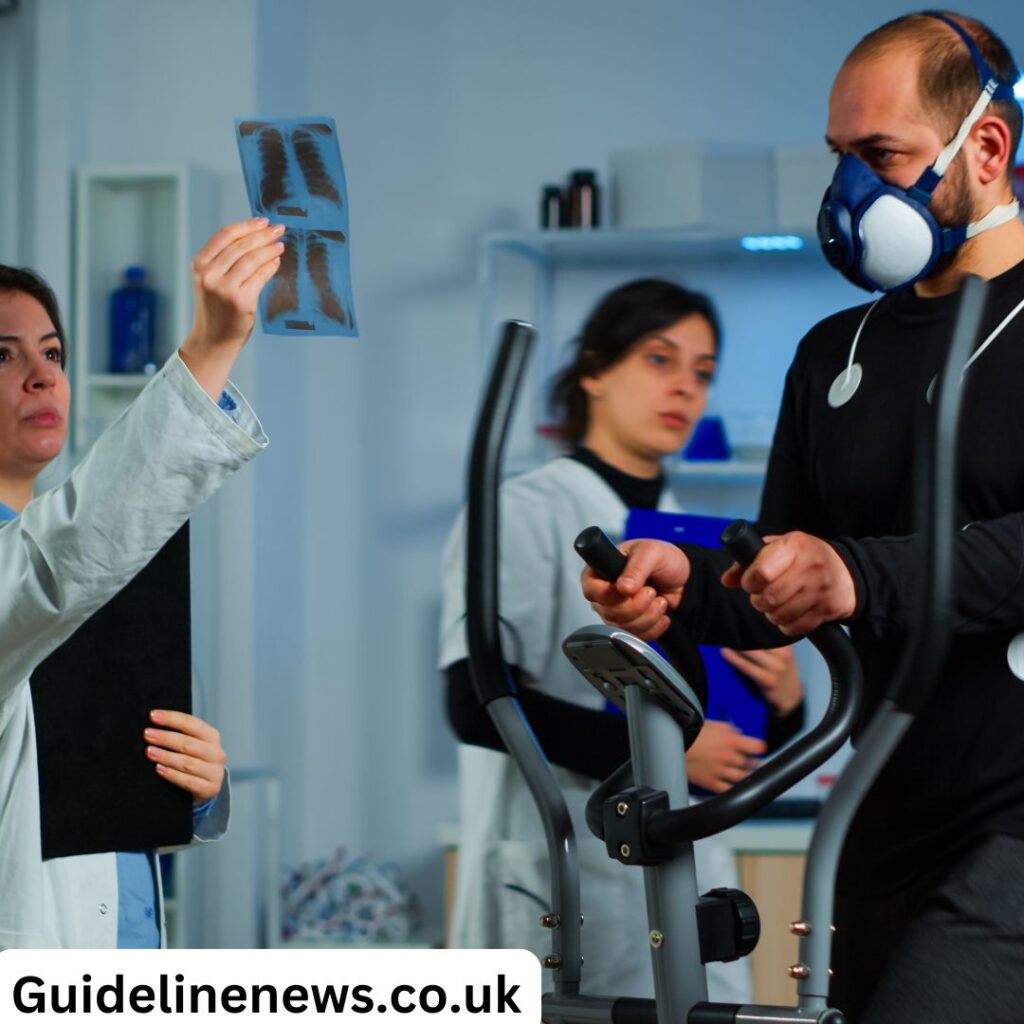Introduction
In today’s international, technology performs a crucial function in enhancing athletic performance, enhancing safety, and supplying extra immersive fan stories. Sports technology labs have emerged as vital hubs wherein innovation meets sports, permitting researchers, engineers, and athletes to collaborate on groundbreaking answers. From wearable tech and performance analytics to damage prevention gear and digital reality reviews, those labs force the destiny of sports ahead. This article will delve into the sector of sports technology labs, their affect on enterprises, and the modern answers they are creating to revolutionize the way athletes train, compete, and get better.
Background
Sports technology labs are devoted research centers that concentrate on developing and testing contemporary technology within the world of sports activities. Their goal is to create innovations that improve overall performance, optimize athlete fitness, and make sports activities safer and more enticing for members and enthusiasts alike.
These labs often collaborate with universities, tech agencies, and expert sports corporations. For example, the Australian Institute of Sport (AIS) has its very own devoted sports technology division, which partners with academic institutions and sports activities corporations to develop equipment and techniques that help athletes excel. In the U.S., MIT’s Sports Lab combines engineering, technological know-how, and fact analysis to design technology for improving athletic performance throughout diverse sports activities.
Through rigorous research, checking out, and development, sports technology labs explore a huge range of areas, from biomechanics and wearable tech to augmented truth and fan engagement platforms. The improvements popping out of those labs no longer only enhance the way athletes educate and compete but additionally bring lovers toward the motion in new and thrilling approaches.
The Role of Sports Technology Labs
Research and Development
In the middle of each sports activity technology lab is a dedication to research and development (R&D). This entails checking out new ideas, experimenting with contemporary technology, and running carefully with athletes to improve overall performance. The R&D method in sports labs may additionally consist of biomechanical research, human performance assessments, and prototyping of wearable gadgets or sports activities devices.
These labs are chargeable for developing gear that provides deeper insights into schooling and performance. Through R&D, they find out how elements inclusive of muscle fatigue, coronary heart rate variability, or hydration stages can affect an athlete’s capacity to carry out. By gathering statistics and analyzing them, researchers can develop merchandise that might be designed to meet the precise needs of individuals, athletes, or entire groups.
Collaboration between Academia, Sports, and Technology
One of the important elements of sports activities technology labs is the collaborative surroundings. Universities, sports leagues, and tech groups paint together to blend technology with realistic packages in the subject. These partnerships facilitate the improvement of technology, which is both academically sound and practically beneficial for athletes. For instance, Stanford University’s Sports Performance Lab has worked with expert sports teams, Olympic athletes, and startups to improve the whole thing from biomechanics to device design. Similarly, MIT’s Sports Lab collaborates with organizations like Adidas and Under Armour to carry modern-day generation immediately to athletes.
Emerging Trends and Innovations
Sports technology labs are on the slicing edge of innovation, with many labs exploring rising tendencies together with digital fact (VR), augmented reality (AR), and artificial intelligence (AI). VR and AR are being used to create immersive education environments where athletes can simulate actual-sport conditions without physical stress. Meanwhile, AI-powered structures are revolutionizing the manner in which coaches and groups examine information to make knowledgeable selections approximately method and participant improvement.
Innovations from Sports Technology Labs
Wearable Devices and Performance Monitoring
One of the most outstanding improvements to emerge from sports technology labs is the wearable era. Devices, which include smartwatches, GPS trackers, and coronary heart rate video display units, allow athletes and coaches to tune performance metrics in real-time. By reading information from wearables, coaches could make adjustments to training regimens, optimize overall performance, and reduce the chance of harm.
Wearables also offer insights into an athlete’s restoration manner, tracking variables such as sleep styles, coronary heart charge variability, and hydration ranges. This real-time feedback can tell decisions approximately about rest, vitamins, and education depth.
Data Analytics and Sports Performance
Data analytics have come to be a necessary device in contemporary sports. Through advanced algorithms and machine-gaining knowledge, sports activity labs are capable of system great amounts of records to offer insights into participant performance, group dynamics, and recreation methods. Professional teams throughout the globe use data to scout skills, expand game plans, and decrease accidents. In baseball, for example, data analytics has converted participant assessment with equipment such as Statcast, which tracks player actions and recreation occasions with excessive precision. Meanwhile, in soccer, sports activity labs assist groups in assessing passing styles, positional play, and shot efficiency.
Injury Prevention and Rehabilitation Technology
Injuries are an inevitable part of sports activities; however, the era is helping to lessen the frequency and severity of accidents. Sports generation labs are at the vanguard of developing harm prevention gear, consisting of wearable sensors that display muscle pressure, joint actions, and frame mechanics. These devices alert athletes and trainers to capacity dangers before serious damage happens. Additionally, rehabilitation technology is advancing with the use of virtual reality and biofeedback gear. VR systems permit injured athletes to simulate physical moves without setting stress on their bodies, helping recuperation even as they retain excessive mental engagement.
Immersive Fan Experiences and Virtual Reality
Beyond athletes, sports technology labs are also focusing on enhancing fan engagement through immersive technologies like digital reality (VR) and augmented reality (AR). VR headsets allow fans to experience video games from a player’s attitude or experience courtside perspectives from the comfort of their homes. AR can enhance live sporting occasions via overlaying stats, player statistics, and interactive elements in real-time. These improvements transform the way enthusiasts have interaction with their favored teams, creating a greater dynamic and attractive experience.
Impact on Athletes, Teams, and Fans
Enhancing Athletic Performance
Sports generation labs play a crucial role in maximizing athletic ability. With tools for real-time monitoring, data analytics, and biomechanical evaluation, athletes are extra privy to their bodily limits and capabilities. This permits them to satisfactory-music their schooling regimens and perform at their peak.
Improving Athlete Safety and Well-being
Injury prevention and recuperation are central issues for sports activities technology labs. With the development of wearable sensors and rehabilitation technology, athletes can reduce their threat of injury and get better extra effectively, allowing them to experience longer, healthier careers.
Creating Engaging Fan Experiences
From interactive stadium reports to VR and AR technology, fans can now interact with sports in ways never earlier than possible. Sports technology labs help bridge the distance between enthusiasts and the motion, making the revel in more personalized and immersive.

The Future of Sports Technology Labs
Artificial Intelligence and Machine Learning in Sports
AI and system learning are set to have a profound effect on the destiny of sports activity technology. These gears are already getting used to research performance, predict injury risks, and optimize schooling plans. As AI keeps to adapt, we are able to anticipate even greater advanced analytics, which could offer designated insights into recreation approaches, player development, and fitness monitoring.
The Integration of Biotechnology
Biotechnology is becoming more distinguished in sports, with labs exploring how genetic checking and bioengineering can enhance overall performance and recovery. This area holds promise for personalized education regimens based totally on an athlete’s genetic predispositions.
Evolving Role of Big Data in Sports
Big statistics will remain a key component of sports, with a growing cognizance of predictive analytics and overall performance optimization. The potential to procedure and interpret large datasets will help groups and athletes make better-knowledgeable choices, leading to progressed performance and fulfillment on the sphere.
Conclusion
Sports technology labs are transforming the arena of athletics via developing modern-day solutions that decorate overall performance, ensure protection, and have interaction enthusiasts. From wearable devices and data analytics to VR studies and AI-pushed tools, those labs are pushing the boundaries of what’s viable in sports. As generation maintains to evolve, the impact of sports generation labs will simplest develop, leading to greater innovations that revolutionize the way we experience sports.
FAQs
1. What is a sports era lab?
A sports era lab is a research and improvement hub focused on developing technology that improves athletic overall performance, saves you injuries, and beautifies fan engagement.
2. How does the wearable era help athletes?
Wearable gadgets measure actual-time overall performance metrics together with coronary heart rate, motion, and muscle activity. This statistic enables athletes to optimize education, prevent injuries, and restore screens.
3. What role does AI play in sports activity generation?
AI and machine learning are used to investigate statistics, are expecting effects, and broaden personalised training plans for athletes. AI can also help in injury prevention by way of figuring out patterns that lead to accidents.
4. How does virtual reality effect fan stories?
Virtual fact allows enthusiasts to experience games from particular perspectives, such as a player’s view or a virtual courtside seat. It creates immersive studies that bring fans towards the motion.
5. What is the future of the sports era?
The future of sports generation includes advancements in AI, large data, and biotechnology to be able to enhance athletic performance, harm prevention, and fan engagement.

